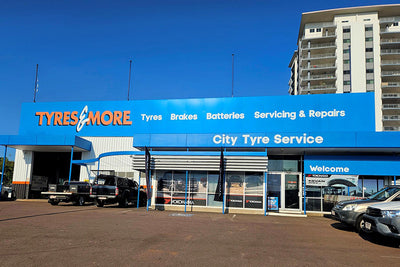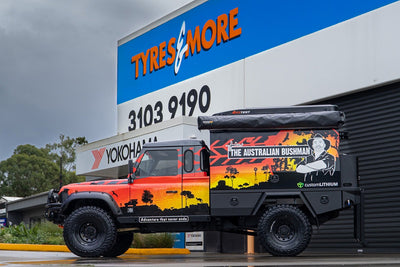An Australian Road Trip is a great idea at any time of year. In summer, you’ll have a whale of a time just about everywhere, and in the winter, you can drive on to warmer climates. To have the best possible time, make sure you’re prepared before you leave.
Preparing the Vehicle for Long Drives
It’s important that your car or vehicle is in good working order before you set off - you’ll need to check your tyre pressure. They must be at the cold inflation pressure specified by the manufacturer. Remember, if you are going to have heavy loads or adverse you’ll need to add more pressure. Heavy loads and certain weather requires more! There is a legal tread depth minimum of 1.5mm, but anything below 3mm is a risk in wet weather.
You should also be checking the fluids in your car, such as oil and water. Next check that all of your lights work, and that you’ve filled up a full tank before you leave. Finally, check any caravans or trailers you may be towing are safe.
If you’re struggling with any aspect of this, or you think it’s time you bought a new set of tyres, be sure to pop into your local Tyres & More!
Emergency Preparation
To avoid accidents, try driving only during daylight hours. This is because it’s more likely that you’ll hit animals if driving at dusk, dawn or at night.
You should take lots of extra water and food with you to provide enough for all passengers, as well as water for the car. This is especially important in remote places and when there’s extreme heat.
Packing special emergency gear may also be necessary, such as:
* A source of light * A personal locator beacon * A compass * A lighter * A tow rope * A spare tyre * Jumper cables * A spare fan belt * A spare hose * Spare fuses
If you have phone reception, try making a call first. If not, carry a hi-vis jacket so that you can flag a fellow motorist down.
Planning the Route
You should try to plan your route, even if you don’t have everything set in stone. Half of the fun when road tripping is discovering places along the way, but you should have an idea in advance. If camping, try to figure out where campsites may be, and whether they’re free or if you need to book. You can also check where bathrooms are along the way.
Heading into remote areas can pose some challenges because there are often fewer rest stops and, in some cases, even fewer places to stop for fuel. It is a very good idea to carry extra fuel for this reason, as you don’t want to get stuck, especially in places where there aren’t many other motorists.
And, of course, don’t forget your GPS! If using Maps, download them to use offline in case of poor service, or use a Telstra SIM for the best remote coverage.
Keeping Passengers Comfortable
Long journeys ought to be comfortable! Don’t forget to bring snacks and drinks, particularly in areas where food stops on the way may be scarce. You could also bring blankets - it can get cold in winter, or when you can’t all agree to turn the A/C off!
You should also think about bringing along the likes of toilet paper, wipes and hand sanitiser. Along the way, bathrooms may not be well-stocked!
Entertaining passengers can be a tough one. Download music in advance, have chargers available and follow our advice on keeping children entertained.








